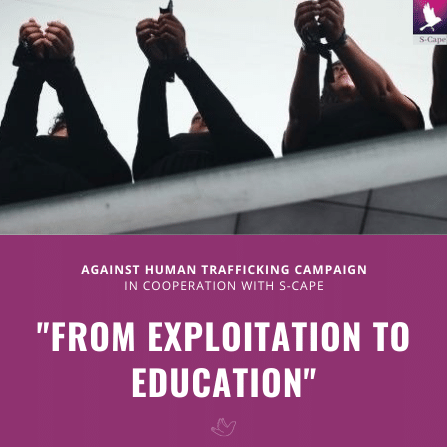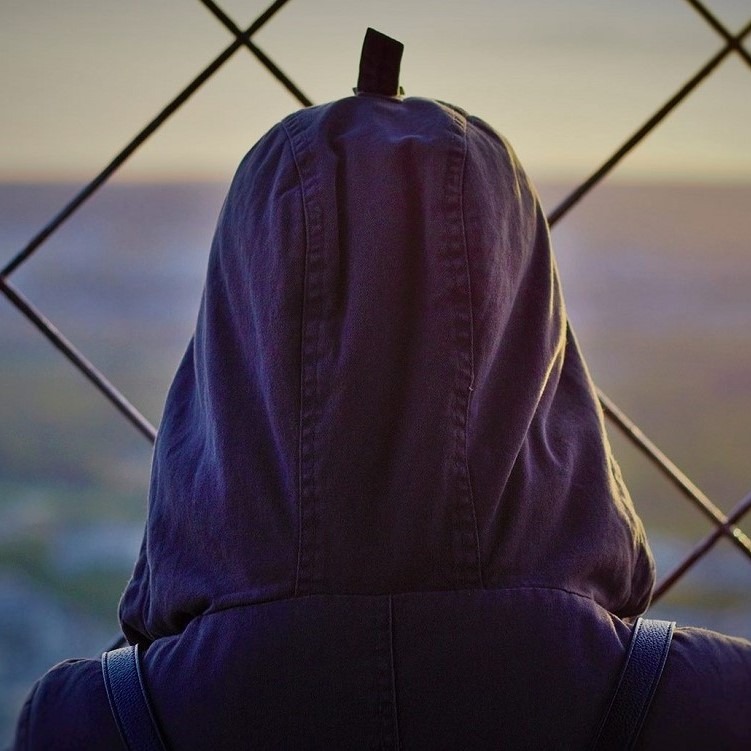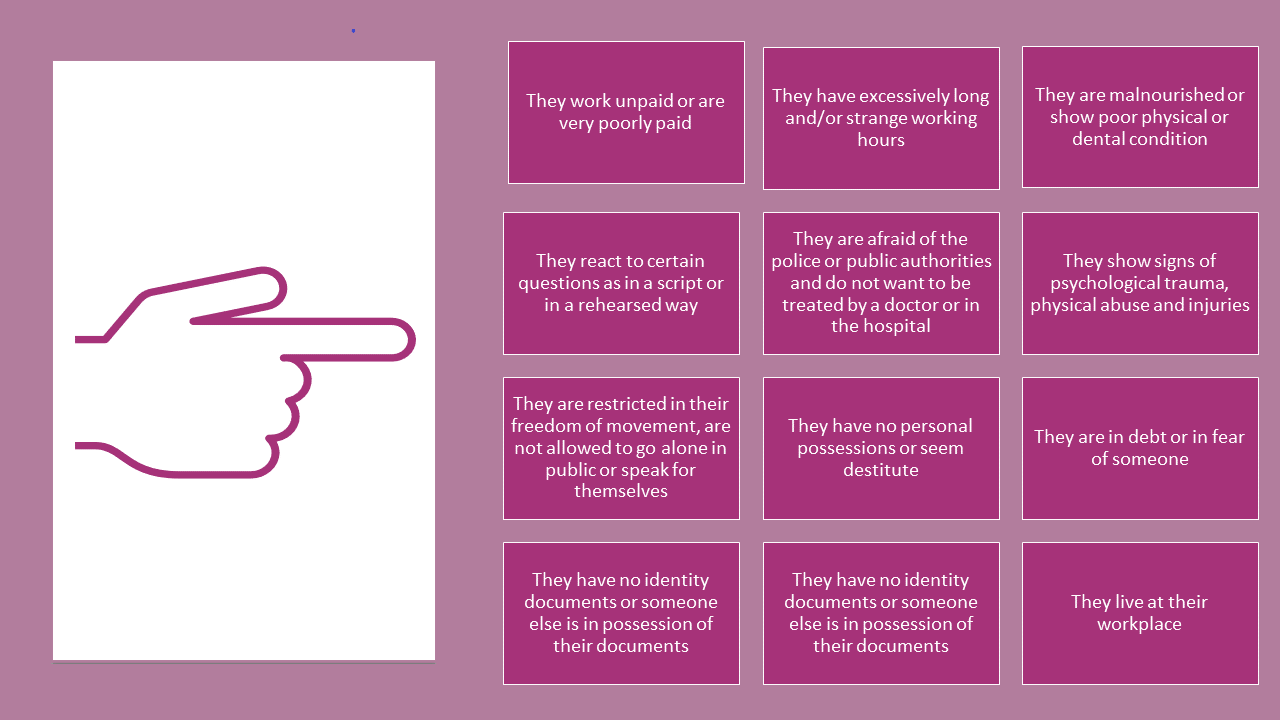
11 Oct What is human trafficking? Read the signs!
“No one may be held in slavery or servitude; No one shall be required to perform forced or compulsory labour.” This is stated in the 4th Article of the European and UN Conventions on Human Rights.
Despite the legal enshrinement of the prohibition of human trafficking in almost all countries of the world, human trafficking – or modern slavery – is a lucrative business model. Annual reports by human rights organizations such as the Walk Free Foundation and the International Labour Organization estimate that there are between 20 and 40 million cases of human trafficking – and the trend is rising.
According to Menschenhandelheute.net, the reasons for the inaccurate global figures and the enormous number of unreported cases are complex. They are part and parcel of the difficulty of combating human trafficking sustainably:
- The majority of states have anti-trafficking laws, but both the definition of trafficking and the way police and courts deal with it vary, sometimes significantly. For example, in some countries forced marriage is a form of human trafficking, but in others it is not. In other countries, on the other hand, data on trafficking in human beings are aggregated or mixed with data on irregular migration or prostitution so that different facts find their way into the statistics on the basis of only one figure.
- Victims of human trafficking are usually “invisible”, i.e. they cannot be identified by the authorities. Distrust of the authorities and the stigmatisation of certain population groups (such as prostitutes) contribute to invisibility considerably.
- The factors used to identify victims of human trafficking are deficient. The typical image of an innocent victim (e.g. sexually innocent woman who becomes a victim of sex trafficking) contributes to the fact that women who first voluntarily enter the sex trade and are then forced into forced prostitution do not appear in the statistics.
Despite widely differing figures, the various human rights organizations agree on one point: Human trafficking is the fastest growing crime worldwide (See this report of the UNHCR).
What types of human trafficking are there?
The UN defines trafficking in human beings as follows: “Trafficking in human beings includes the recruitment, transport, transfer, accommodation or reception of human beings by force, fraud or deception with the aim of exploiting them for profit.” Trafficking in human beings can affect women, men and children and take very different forms:
Forced labour:
According to the International Labour Organisation, forced labour is the most widespread form of modern slavery (over 62%). The most frequently affected are domestic work (24 percent), construction (18 percent) and manufacturing (15 percent).
Child labour:
Work on plantations, textile factories or in households is carried out by children and young people under the age of 18. The salary is either very low or the salary is not paid. As a rule, the children do not have the opportunity to attend school, so that the risk of them becoming victims of exploitative living and working conditions in the long term increases.
Sexual exploitation:
The majority (but not exclusively) of victims of sexual exploitation are women and girls. They are forced to work as prostitutes or to provide sexual services free of charge. The causes often lie in inequality and power relations as well as a lack of education and job opportunities for women and girls. This results in dependencies, especially for women, who make human traffickers their own.
Debt bondage:
Debt bondage is an instrument of traffickers in both forced labor and sexual exploitation to make their victims dependent. Financially weak people are lured into a debt trap by companies or private individuals. Human traffickers, including private companies – and people offer their victims to work off their debts. However, since the interest rates are too high and their earnings are too low, there are no real chances of ever paying of the debt.
Forced marriage:
In many cultures, this is understood as a tradition and continues to be practiced. The vicitims are mostly underage girls who are married without their consent for a variety of reasons.
Hereditary slavery:
Fortunately, inherited slavery is no longer widespread, but still widespread in various African and Asian countries. This means that people are born into slavery – despite legal prohibitions, social practice continues to exist in some countries, i.e Mauritania).
Know the signs of human trafficking
Many victims of human trafficking remain invisible. According to S-Cape, a shelter for victims of human trafficking in South Africa, only 1% of victims are recognized and freed from their situation. We can all help to discover victims. The following points can help to identify victims of human trafficking:
You suspect a case of human trafficking?
Report suspicious behaviour and get help!
South Africa: + 27 (0) 800 222777
Support survivors of human trafficking in South Africa!

Support our current crowdfunding campaign for a safe-house for victims of human trafficking in South Africa. The shelter offers victims of sexual exploitation in particular a place of protection and supports them in breaking the vicious cycle of poverty, violence and exploitation and empowers them to live a self-determined life.

Would you like to support victims of human trafficking in South Africa as part of a volunteer service or internship?
Contact us for more information about the current situation in South Africa and a free personal consultation to plan your unique South Africa experience!


